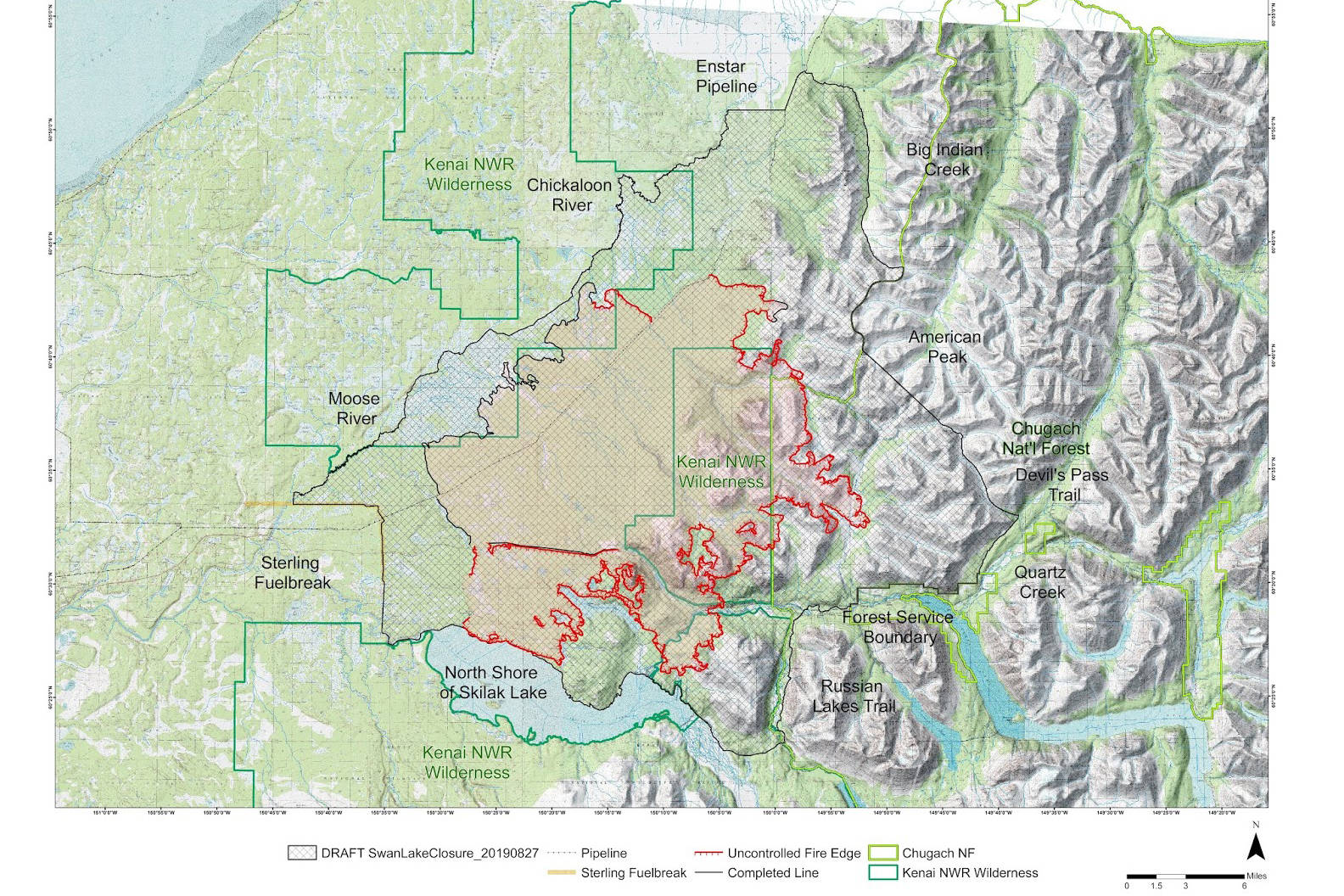Continued wildfire activity has prompted the U.S. Fish and Wildlife Service and U.S. Forest Service to issue emergency area closures for portions of the Kenai National Wildlife Refuge and the Seward Ranger District of the Chugach National Forest.
Closures for the Chugach National Forest include: all National Forest Service (NFS) lands and facilities south of American Creek to its intersection with the Resurrection Pass Trail, all NFS lands west of Resurrection Pass Trail to Devil’s Creek Trail, all NFS lands west of Quartz Creek and north of the Sterling Highway to the Kenai National Wildlife Refuge/National Forest boundary and all NFS lands east of the Kenai National Wildlife Refuge Boundary to American Creek.
On the Kenai National Wildlife Refuge, closures include: all public use facilities within Skilak Wildlife Recreation Area, all refuge lands, trails and facilities adjacent to the Sterling Highway from the eastern boundary of the refuge at Mile 55 to the western boundary of the refuge at Mile 76 and the Sportsman’s Boat Launch Facility.
More details about the refuge closures as well as a map showing the areas affected can be found at https://www.fws.gov/refuge/kenai/. More details about the closures in Chugach National Forest can be found at https://www.fs.usda.gov/alerts/chugach/alerts-notices.
The closures are due to concern for public health and safety related to the Swan Lake Fire, which has been burning in the Kenai National Wildlife Refuge for 85 days and is currently at 161,921 acres. The closures will be in effect through Sept. 27, but may be rescinded or extended as conditions change.
According to the news release from USFWS, dangerous conditions within the burned area can cause serious injury. Deep ash pits can form in burned organic layers — also known as “duff” — and can stay hot under the surface while blending in visually. Stepping into an ash pit can cause serious burns.
In addition, burned trees have lost their root systems, leaving them weak and likely to fall down even in light winds. Falling trees can change trail access and create challenging hiking conditions where trails were easily accessible in the past.
The open-fire burn restriction remains in effect and includes warming and cooking fires.

